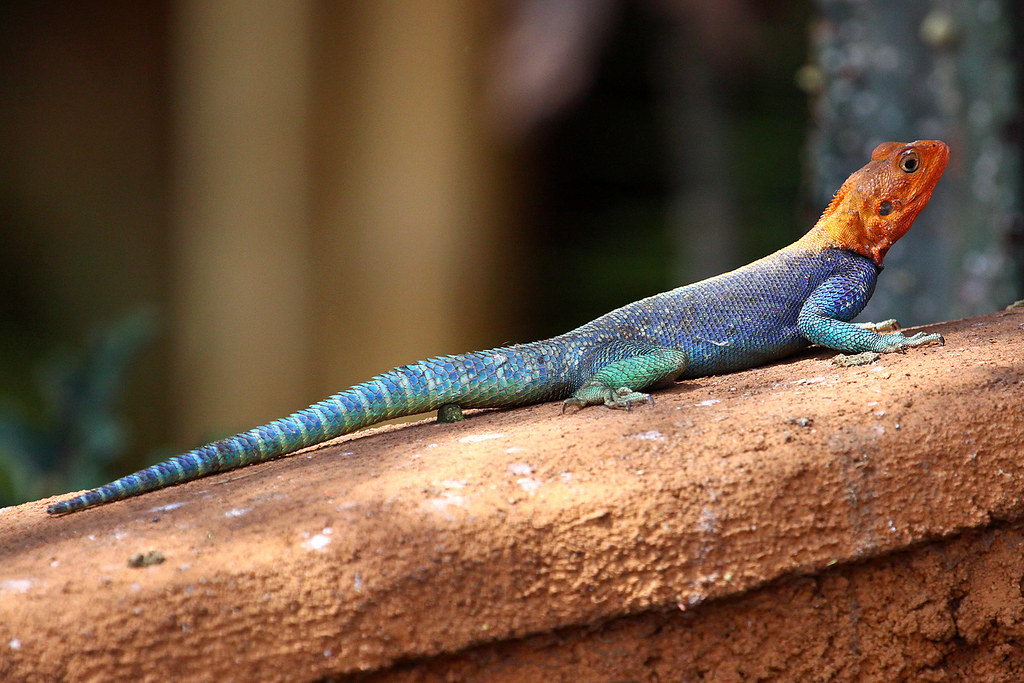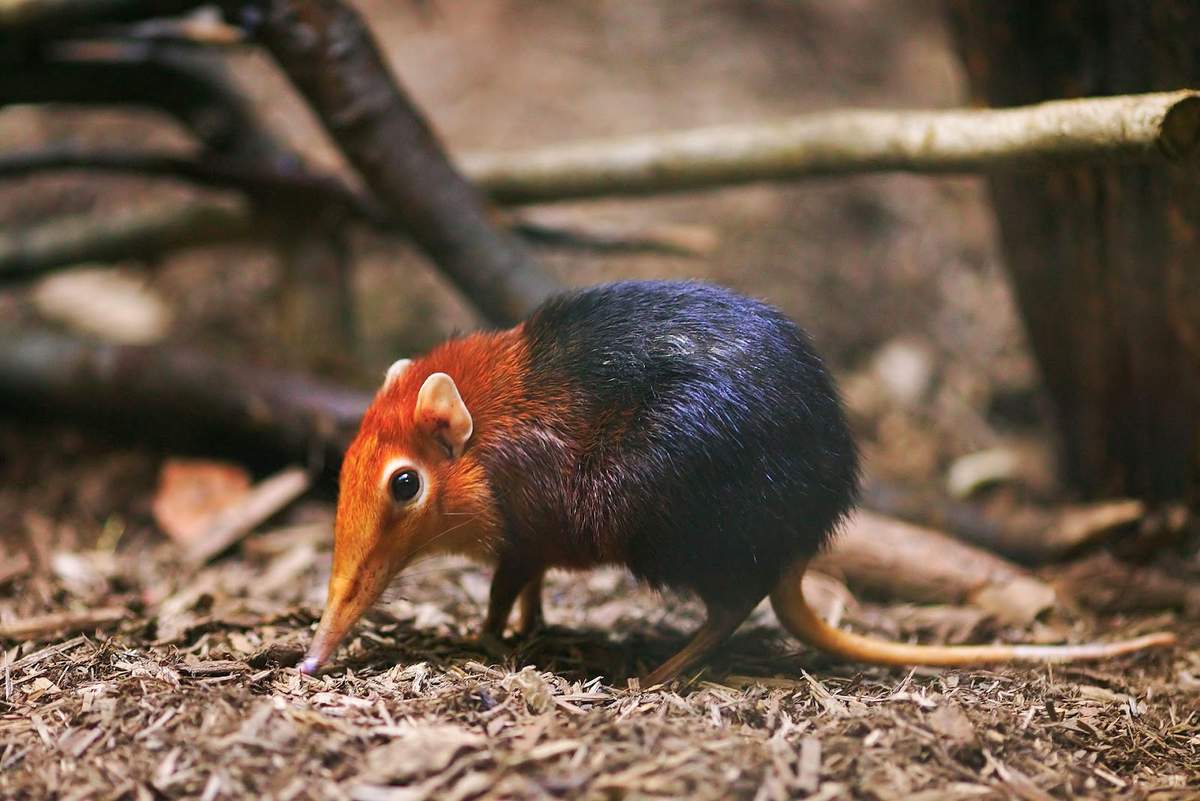Gammy the agama lizard
Gammy the Agama Lizard: Agamas are the most common and dominant reptiles found in Africa. They are very flexible and can easily adapt to the changes in their environment. In the past, agamas were living in the forests of Africa. But as forests began to disappear, Agamas managed to adapt to life in open spaces in both rural and urban areas.
Agamas live in groups that are composed of one dominant male, a couple subordinate males and a large number of females. As the Dominant male, it is said to have an impressive and distinct coloration because of its blue body and red head. Agamas are insectivores and can survive for a long period of time in the wild. The average lifespan of agama is between 25 and 28 years.
Endy the Gecko
Geckos are known to be oviparous reptiles who lay their eggs in dark, damp locations. They lay one clutch of eggs per year. Classified under the family Gekkonidae. They are found on every continent except Antarctica but are mostly found in urban areas, living within houses and so close to light sources, and in forests within trees and also deserts. They have large eyes covered by transparent scales that act as protective lenses and can only see in black and white and feed on insects and small vertebrates. They are nocturnal, meaning they are most active at night.
Adama the Forest Shrew:
Often mistaken for the common rat, the forest shrew, botanically referred to as myosorex varius, is a species in the mouse shrew family. With its natural habitat in dry savannahs, temperate forests and shrubby vegetation, the forest shrew is a cylindrically-shaped mammal with an average length of 5 inches, with a tail an average length of 1.7 inches and an average mass of about 12 g. Nocturnal and territorial in nature, the forest shrew is an insectivore which finds its main source of nutrition in insects and small invertebrates.
Ng the Lizard:
Lizards are a vast group of squamate reptiles. With over 6000 different species, these creatures range in size from a few centimeters to as much as 3 metres long! Although lizards can in most regions except Antarctica, the far North and a few islands, their habitation preference is warm tropical climates. Lizards are predators who feed on small invertebrate animals — mostly insects.
Asa the Hawk
Regarded as birds of prey, hawks are characterized by their sharp talons and unique muscular legs. With excellent eyesight, speed, and an acute sense of hearing, hawks are able to hunt down their prey of small mammals and insects. Unfortunately, however, over 20 out of 200 species of hawks existent across the world are endangered or vulnerable due to deforestation and urbanization practices!
Fante the Toad:
Toads are a type of frogs known for their jumping abilities, croaking sound, and bulging eyes. Unlike frogs, toads possess a drier, wet-covered, leathery skin and shorter legs. They can live in water and father away from water. Toads are commonly found on most continents except for Antarctica and isolated islands in New Zealand, New Guinea and Madagascar. A common toad can live up to 10-15 years. However, they’ve been recorded to live as old as 39 years when in captivity. Known to start out life in water, they are insectivores who feed on insects
Oga the Chameleon:
The Chameleon is a type of Lizard known for climbing, visual hunting and their skillful ability to change colors. With various species found in Africa, Madagascar, Southern Europe, and across Southern Asia, they live in warm habitats that range from rainforest to desert conditions. Besides their ability to change colors, they can shoot out their tongues at alarming speeds, use their tails as extra limbs and even see in two different directions. With this, a Chameleon can scan most of the surrounding area for food without even moving its head.
Wu the African Dwarf Goat:
The African Dwarf goat is a domestic breed of mammal that originated from the Cameroon region of West Africa. They can be commonly found in Nigeria and some part of the Northern and Southern region of Africa. They got their nickname “dwarf goat” for their small size, known for not growing more than 20inchs and weighing between 35-50 pounds for females, and 40-50 pounds for males. Their scientific name “capra aegagrus hircus” is derived from the latin words, meaning she-goat (capra) and he-goat (hircus). Known for their social and outgoing personalities, they often walk in groups. The African Dwarf Goats are used for milk and meat. As domestic breeds, they live mostly on farmlands. They can also be found in the wild, mostly on hillsides. A typical African Dwarf Goat has a life-span of 15-18 years. They feed on grass and leaves, and they do not shed their horns, so their age can only be determined by counting their growth rings. Due to their friendly personality, they are kept as pets in some places and in many zoos across the world.
Oyana the Ape
Apes aren’t monkeys - even though they are both primates. Apes are generally larger and bigger, they don’t have the tails that monkeys do, have a larger brain-to-body size ratio, and rely more on their eyesight than sense of smell. Apes also have more intricate social structures and longer lifespans. Apes don’t walk upright more often because they have longer arms than legs. Orangutans alone can have an arm span of 8 feet, even though they're only about 4 feet tall.









